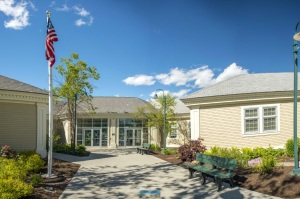Consecrated Virgins 'Marry' Jesus in Rare, Ornate Wedding Ceremony
Three women "married" Christ in an ancient Catholic ceremony over the weekend. Theresa Jordan, Karen Ervin and Laurie Malashanko were the first women to become consecrated virgins in the Archdiocese of Detroit. Like traditional brides, they wore white dresses and wedding rings.
Saturday's ceremony attracted several hundred guests consisting mainly of strangers and almost two dozen priests. In the words of Catholic canon law, the three brides are now "mystically betrothed to Christ." This means they are committed to lifelong chastity, USA Today reported.
During the consecration rites after the Mass, the brides were made to lie prostrate before the altar as the congregation recited the Litany of the Saints. Each bride was given a ring and book of daily prayers while singing "I am a spouse to Him, whom the angels serve; sun and moon stand in wonder at His glory."
The consecration of virgins dates back to the 12th century when there were no convents. The practice was stopped in 1139 as more women joined religious orders. The bishops believed that women would be better protected if they lived together in religious communities.
Pope Paul VI revived the practice in 1970 to include women who were "living in the world" and not just those in religious communities. There are roughly 250 consecrated virgins in the U.S. and 4,000 around the world. Unlike nuns, they don't have to take vows of poverty and obedience.
A woman can be a consecrated virgin if she is mature and has never had sexual relations in her life. However, there are no physical examinations done to prove such a case. Although Chastity is the main criteria for eligibility, sexually abused women may still be consecrated since being a victim is not considered a sin.
As consecrated virgins, Jordan, Ervin and Malashanko will be able to live, teach and serve God among the public and not in a convent like most nuns. But they will be committed to the church 100 percent and serve it in whatever capacity is needed. That direction will come from the diocesan bishop.




























